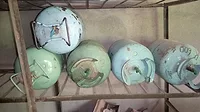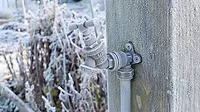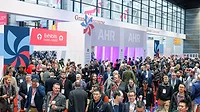Contractor's Corner | Dave Yates
Industry connections are worth their weight in gold
Fish tales and hydronics.

Image courtesy of Evgen_Prozhyrko / iStock / Getty Images Plus.
My older brother Phil invited his older brother, John, and younger brother (that’s me!), to enjoy a day of fly-fishing for trout at his club with an evening catered dinner to follow. Our father and a group of men who loved to fly fish for trout started a club many decades before which served as a tributary to this club’s stretch of pristine crystal-clear stream in Southern York County, Pennsylvania. It had been a letter-perfect day for the brothers-three, a rare opportunity to share some quality time together and enjoy a day on-the-stream pursuing rainbow, brook and brown trout.
During the evening’s social hour, a gentleman approached me and asked why I was wearing a Taco shirt? I returned his questions with one of my own: How is it you know how to pronounce Taco (the circulator manufacturer pronunciation — not the food). He said “You first,” with a grin, so I gave him my company card and a brief background of my mechanical and business career. He asked me if I was familiar with Burnham, or U.S. Boiler in nearby Lancaster, Pennsylvania. You betcha!
My curiosity fully peaked now, he handed me his card: Douglas S. Brossman, president and CEO, Burnham Holdings, Inc. Doug asked if I’d ever visited Burnham and/or the factory. “Not in a few years,” I replied. We set up a plan for the visit. I had spent a day with U.S. Boiler engineers just a few years prior to go over the new and improved Alpine modulating condensing boiler and, as always, came away impressed by their willingness to solicit input/feedback from contractors regarding possible changes and/or improvements that would make our lives easier when installing, servicing and maintaining the products we all sell and install.
My first exposure to Burnham was early in 1972 when I spied a flyer at a local supply house regarding an all-day seminar about hydronics, controls and new products being presented by Burnham in a hotel conference room in east York, Pennsylvania. I approached my bosses, Herb Behler and Scott Behler, owners of F. W. Behler Plumbing, Heating, and Air Conditioning, about attending. “Why do you want to do that?” was their question. “To learn,” was my answer!
You see, back in that time era, it was not uncommon for our bosses to fear us gaining knowledge because we would, naturally, ask for a raise, or, God forbid, go into business and become a competitor! “If you really insist on attending, you will do so on your own time.” I gladly took off time to take in that knowledge, on my own dime, and that was the start of a decades-long learning curve with no end in sight — even to this day!
Learning did lead to earning more. I became a better technician, learned about new and emerging technology and was a far more valuable asset to my employers. Along the way, I met numerous mentors in virtually every aspect of the PHVAC trades and established insider contacts that were worth more than their weight in gold. One of those contacts was Mike Gordon, who was in charge of a research-and-development wing of Burnham. Gordon would often call me to say they were working on something I’d really want to see and, given that Burnham was just 30-minutes away, I would drive over to witness the latest and greatest widget Gordon and his laboratory associate engineers were torturing. As was the case with every manufacturer’s R&D labs I have visited, competitors’ equipment was being tested, dissected and often run to destruction!
Gordon also had me beta-test products that I would install in my home’s mechanical room. One was a new condensing boiler back before modulating condensing boilers became a thing. It was fairly large, and its jacket was painted Burnham Sherpa Blue. Driving home, I realized I was being followed by a gentleman craning his neck, looking at the experimental condensing boiler, and trying to catch a glimpse of me. I installed the boiler in our radiantly heated home and gave Gordon a key so he and his engineers could stop by any time.
Learning did lead to earning more. I became a better technician, learned about new and emerging technology and was a far more valuable asset to my employers. Along the way, I met numerous mentors in virtually every aspect of the PHVAC trades and established insider contacts that were worth more than their weight in gold.
Roughly two months later, I was grabbing a cup of coffee at a local convenience store close to F. W. Behler, Inc., which I now owned, when a gentleman at the counter said “Hey – nice jacket you’re wearing.” Looking up, I saw he too was wearing an identical Burnham jacket! Turned out it was Bob Coons, an executive at Burnham, and it had been Coons following me on my drive home from their R&D lab. Coons told me he was flabbergasted to see Burnham’s as yet unreleased experimental boiler on the back of a mechanical contractor’s pickup truck!
It’s not just boiler manufacturers! I’ve signed enough NDA’s (Non-Disclosure Agreements) to wallpaper a bunch of rooms. Furnaces, heat pumps, mini splits, toilets, etc… All of them have secret R&D labs where they test new products and torture their competitor’s products.
On the appointed day, I met with Brossman and several other executives at Burnham/U.S. Boiler. After some discussions, we headed out to tour the factory floor. At one point, we came across a gentleman who was milling out the push-nipple ports on cast iron boiler sections. Immediately adjacent was a robotic workstation where the exact same process was being performed. I asked Brossman if the gentleman we had just watched was going to be replaced by a robot? “No, only if and when he retires. We have no intention of replacing our existing human workforce with robots simply to streamline our operation and increase profits. We are a people-first company and, instead, will gradually implement changes as employees retire.”
Leaving the cast iron behind, we approached the modcon assembly line and its pristine environment immediately struck me. Like the famous burger chain restaurants, you can have it your way when ordering a Burnham/U.S. Boiler modcon! You want curly fries with that? Fire tube or Giannoni heat exchanger? Taco or Grundfos ECM circulator? No problem! As I’d seen in European modcon boiler factories, every boiler was live-fired with a certified combustion analysis before it could be sent to a customer. Not one to be complacent with their current status, U.S. Boiler brought to market the Alta modcon boiler that is self-adjusting for optimum combustion efficiency and safety.
After a luncheon conference, it was off for a visit with Senior Engineer Ed Johann in the U.S. Boiler research and development building. Johann was working on a new top-secret project; the SteamMax boiler. Brossman told Johann he could pull back the covers over various pieces of equipment to reveal ongoing experiments in progress. Brossman then said I could be given access to the deepest darkest recesses of the lab where, as Johann told me, no one is permitted to go! Johann mumbled something about impending death for me before I would be allowed to leave the lab!
Secrets aside, I was impressed by the SteamMax boiler and asked about beta-testing sites because I had a decades-long customer who had run through three steam boilers — which we installed between 1972 and 2019 — that failed due to rotting out at the water-line. Before I left, an agreement was struck, and I met with our customer the next day to ask for his cooperation to have a SteamMax installed in his home with its late 1800s vapor steam MyOwn radiators. A retired mechanical engineer himself, I knew he and Johann would speak the same language. We installed the SteamMax, along with communication gear so the engineers in Johann’s test lab could monitor its performance, just a few weeks before we sold our business to long-term employee Scott Barnett and his family who, I knew, would continue to work with Johann and U.S. Boiler.
From that first Burnham seminar in 1972 to my last steam boiler installation in 2019, Burnham/U.S. Boiler was a constant companion along my journey. Bookends.
Looking for a reprint of this article?
From high-res PDFs to custom plaques, order your copy today!








